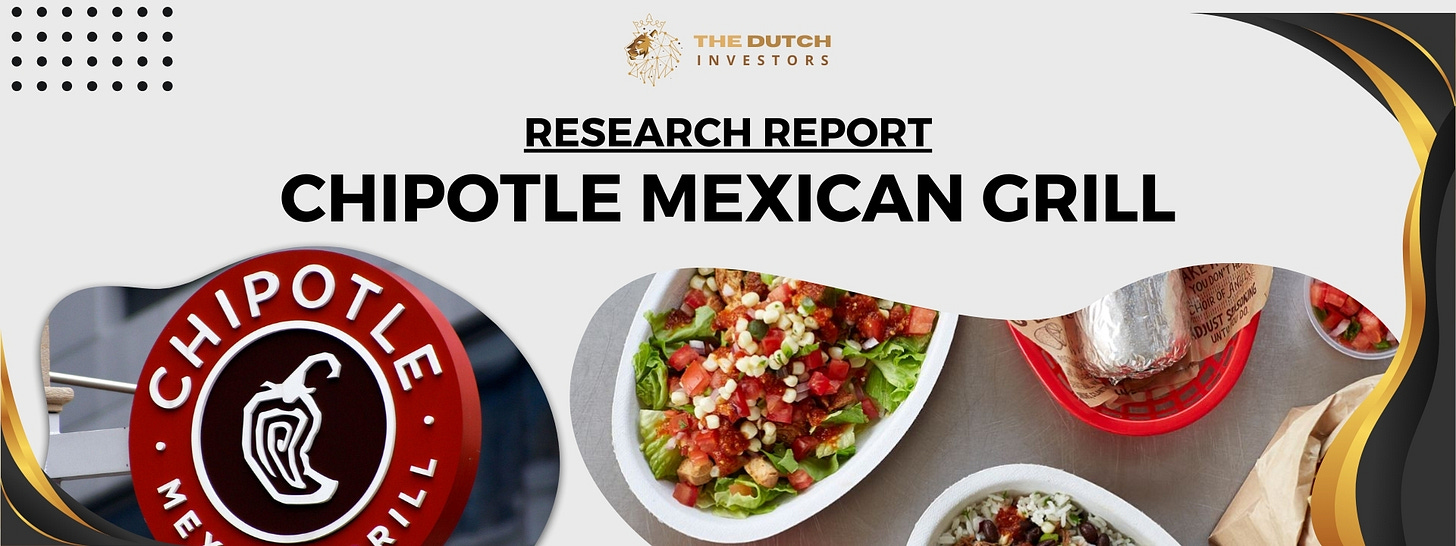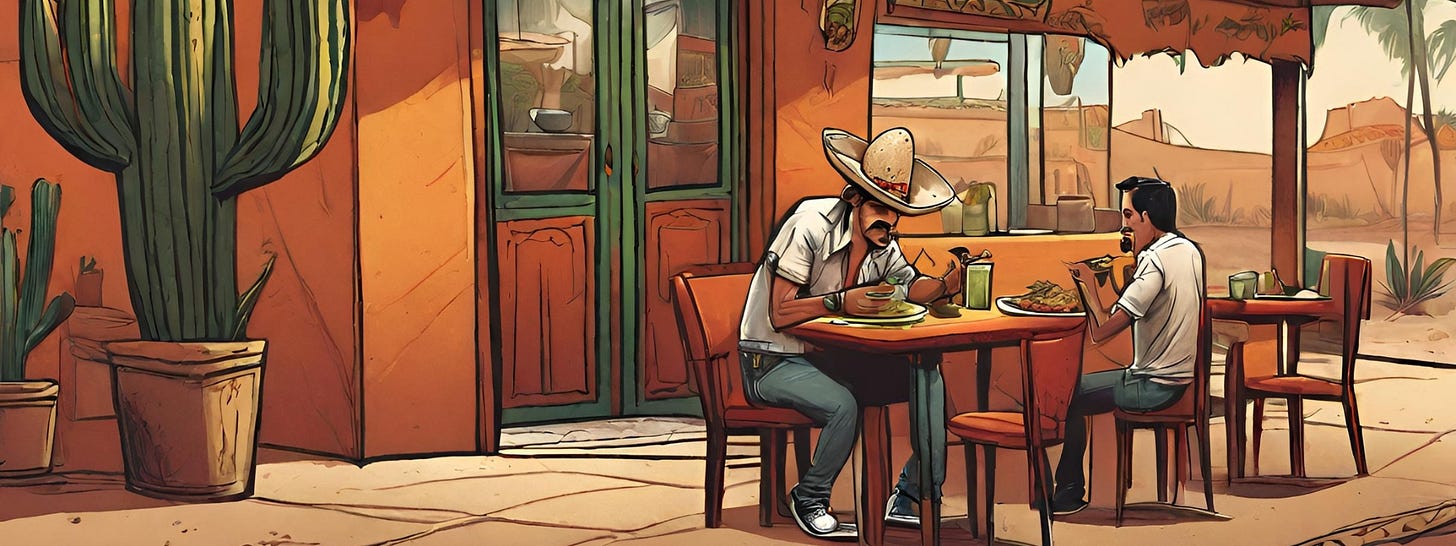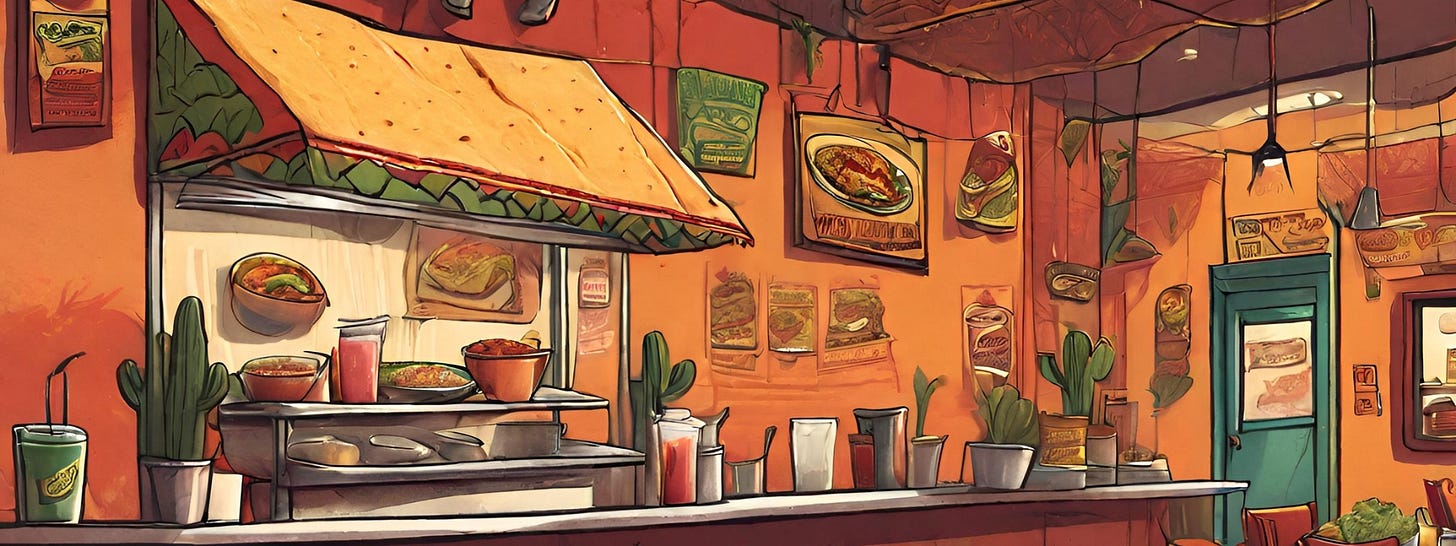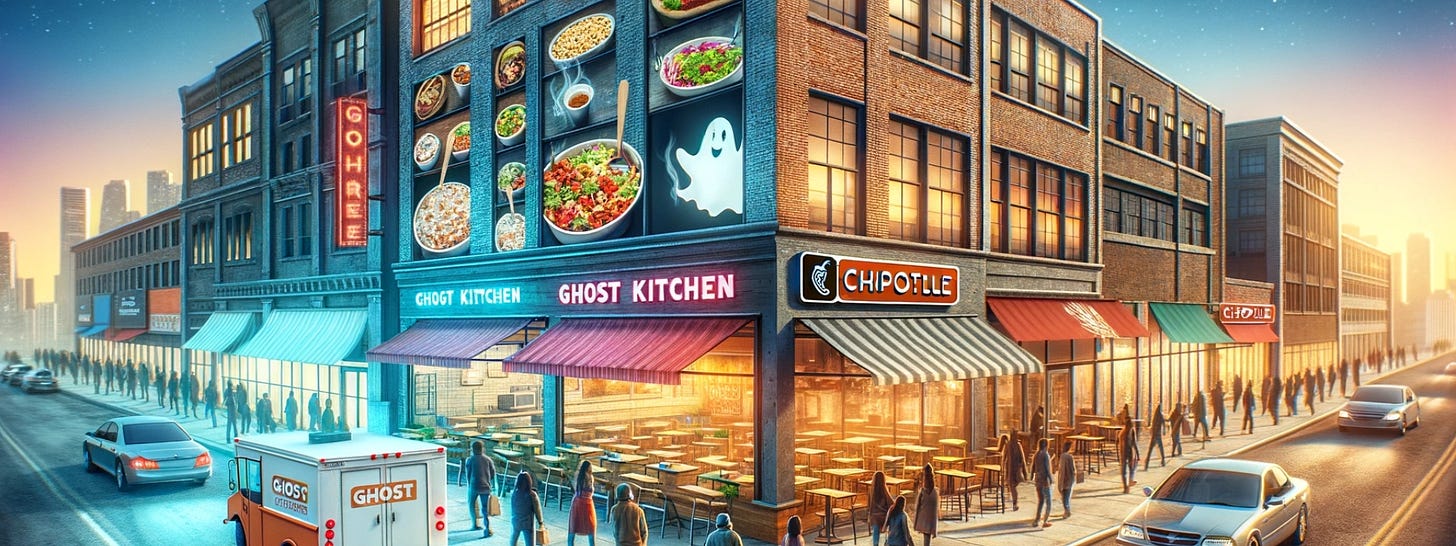Chipotle Mexican Grill - Research Report - Part 1
Understanding Chipotle: A Look at its place in the fast food landscape
Welcome to The Dutch Investors, your go-to destination for insightful stock research reports. This week, we're diving deep into Chipotle Mexican Grill. Sign up for free at thedutchinvestors.com to receive weekly reports straight to your inbox. Don't miss out on valuable investment insights!
Chipotle Mexican Grill
"We believe food has the power to change the world"
This research report is divided into three sections. This is Part 1 of 3. In this segment, we will explore:
Introduction of the company
History
The company
The business model
The sector and industry
The competitive advantage
The moat
1) Introduction
A unique recipe for success
1.1 History
In 1993, Steve Ells entered the fast-casual restaurant market with an idea: a Mexican restaurant to earn money so he could open his own fine dining restaurant. In fact, he didn't want to start a Mexican restaurant at all, but saw an opportunity to make money. A few months later, he opened the first Chipotle Mexican Grill near the University of Denver. It proved a success and he opened two more in the following months.
Chipotle's growth accelerated when Ells opened several Chipotle restaurants with a $1.8 million loan and a small $80,000 investment from his father. Around 1998, Ells (CEO at the time) expanded outside of Colorado, which caught the attention of McDonald's, which invested $360 million for a 90% stake. This partnership resulted in impressive growth, with 500 new restaurants in just 7 years. Chipotle's 2006 IPO at $22 per share was a huge success; the price doubled to $44 per share on the same day. Around that time, McDonald's decided to sell its stake for $1.5 billion, making a profit of just over a billion in 7 years. In retrospect, this was the wrong choice by McDonald's. The stake would now be worth about $50 billion. Ouch!
A crisis as a turning point
However, Chipotle's remarkable rise is overshadowed by major challenges when Chipotle faced a food scandal in 2015. A total of more than 500 people became ill. The outbreaks have had a significant negative impact on the company's reputation and performance. The E.coli and Norovirus outbreaks are causing a significant drop in the stock price (-60%) and revenue (-$600 million), forcing the company to make major changes. The CEO at the time showed an exemplary response to this crisis, acting as any CEO should in the face of a scandal or major problem. He closed more restaurants than experts deemed necessary to thoroughly evaluate and resolve the problem. On national television, he repeatedly apologized, promised to reimburse medical costs for all those affected, and emphasized that Chipotle would do everything to strengthen,improve, and prevent. His actions as CEO were extremely important for the company's recovery after this major setback.
2) The company
The ingredients for success
2.1 The revenue model
Chipotle primarily generates revenue from food and beverages in the restaurants themselves. In FY 2023, restaurants themselves accounted for 99.3% of the revenue, while delivery services contributed 0.7%. In FY 2022, 99.1% were in-house restaurants and 0.9% were delivery. Out of the total, 37.4% has been generated through digital sales channels like the website or app. The money is made in restaurants at the moment.
2.2 The sector and industry
In Chipotle's early years, the sector was already developing rapidly, with various competitors, of which Taco Bell was the most dominant player at the time. Chipotle has learned from the established market, not only from their successes, but also from their failures. This has set them apart from others. They were able to work more efficiently, made fewer mistakes (which saved money), and were better at attracting and retaining customers.
Small scale
It seems that there has been a shift from mega-franchises to a greater emphasis on smaller scale, precision, and a focus on quality, customers, and details. Adapting to changing consumer preferences, local tastes, and niche markets has become essential for success in this sector (Barron, 2012). Chipotle understands the shift in the industry and has developed a successful business model, focusing on high-quality ingredients, fair production methods and strong customer loyalty. Other restaurant chains, like KFC and McDonald's, have taken proactive steps to introduce their own high-quality and healthier options. Even though this appears to have some success, customers continue to perceive KFC and McDonald's as 'fast food', regardless of the options that are supposedly 'healthier'.
The shift in 'power' is remarkable. Where companies used to have the most power, the consumer now has more power. In the digital age, the internet and social media have given consumers unprecedented influence over the success of restaurants (and other businesses). Meeting demand is no longer enough; an active response to consumer needs and expectations has become crucial. One small mistake, misstep, or scandal, and the company is razed to the ground. A double-edged sword. In today's world, flexibility and the ability to respond to ever-changing consumer demands have become extremely important to the success of restaurants, both nationally and internationally.
The restaurant industry
The US restaurant industry contributes approximately 3-4% to US GDP. The market has a TAM (Total Addressable Market) of $976 billion in America alone. By 2022, the number of fast food restaurants (QSR) had reached almost 200,000, with 4,300 high-end restaurants, 38,400 coffee shops, and 9,700 breweries, according to Statista (2022). The most profitable restaurants are QSR (Quick Service Restaurants). Chipotle operates in this most profitable segment. The sector is characterized by quite high capital investments (opening restaurants, purchasing equipment and large staff) and intense competition. Although consumers consciously choose tasty (un)healthy food, the 'affordability' factor continues to play an important role. As a result, there is a kind of price ceiling on the prices that companies can charge for their food and drinks, which automatically results in a 'maximum' profit margin. I would consider ROIC percentages above 12% in this segment to be very good.
The fastest growing segment in the restaurant industry is so-called 'ghost kitchens' (restaurants that only deliver meals), with a staggering 85% growth in 2022. Experts expect this market to reach around $71 billion by 2027.
Competition is following Chipotle in a healthy direction
Chipotle's Mexican-inspired dishes have made it a big name in the fast-casual food game. But where there's money to be made, there's always competition. And in the fast-casual world, there are a bunch of other restaurants trying to get a piece of the pie. Each one has its own thing going on, which makes the food industry super competitive. Everyone is trying to get repeat customers who want to spend their hard-earned cash on food and drinks that are healthy, quick, and, most importantly, taste great.
Chipotle's success in providing healthier fast food options has prompted competitors such as Texas Roadhouse, McDonald's, Darden Restaurants, Restaurant Brands International, and YUM Brands to expand their menus with healthier choices, customization, and localized offerings. Despite this competition, Chipotle maintains a significant lead, with a compound annual growth rate (CAGR) of over 15%. The company plans to continue expanding by opening around 250 new restaurants each year.
The restaurant industry is a highly competitive industry with a high risk of bankruptcy. According to a study by BinWise (2022), approximately 60% of restaurants fail within the first year of operation and 80% within the first five years. This causes the market to consolidate automatically.
H3 - The competitive advantage
Risky restaurants or sector with potential
3.1 The moat
Although sales growth is an important indicator, it does not provide sufficient insight on its own. Our focus extends further to increasing profit figures and returns on invested capital (ROIC). An analysis of the ROIC compared to five competitors reveals that CMG's ROIC (dark blue) shows an increasing trend. With an ROIC of 18.5% not exceptionally high when compared to competitors, however, when compared to the average, this is very good.
Despite many risks, there are a number of successful players in the restaurant industry. These players have a number of common characteristics, including:a strong bran, a good product and/or service and a experienced management team that ensures good capital allocation. Chipotle Mexican Grill is one of the more successful players in the restaurant industry. The company has achieved an average return of 24% per year since its IPO in 2006. This is an impressive achievement, but it's not clear whether Chipotle really has a "distinctive" competitive advantage. What makes us believe that? Restaurant chains can be copied. If companies like Taco Bell or new entrants see what makes Chipotle so profitable and successful, you could theoretically do something similar, with a slightly better value proposition. Then CMG will have to compete on price, and margins will fall sharply again. I do not believe it is easy to outcompete restaurant chains like Chipotle, McDonald's, or Taco Bell, but it is definitely possible! What Chipotle does have is a strong brand name based on the perception of healthier products with higher quality at a fair price. The brand name has a number of important (competitive) advantages for CMG:
High retention: CMG has a retention rate of over 90%, which means customers are very satisfied with the food and service and want to return. This results in frequent visits from CMG customers.
Pricing power: CMG has certainly shown some pricing power so far, meaning the company can raise the prices of its products without leading to a major drop in demand. In FY 2022, CMG increased menu prices by 12% (10K, 2022) and in FY 2023 by 5.2%. This must be done well-founded, because there is a kind of 'natural' limit to it, whereby customers still find it too expensive and do not return.
In addition, consumers associate Chipotle with 'healthier food', while companies such as McDonalds often have a negative association (fast food, unhealthy, obesity, lots of sugar, products that last forever, etc.). These (competitive) advantages have helped Chipotle to be successful thus far, but they are also characteristics that many other successful restaurant companies possess. It's therefore difficult to say whether Chipotle really has a sustainable competitive advantage. Right now, I would say Chipotle has no durable competitive advantage.This feels strange to say because there are so many positive aspects, but when analyzing companies, you have to be critical before giving a company the 'moat' sticker. That doesn't change the fact that Chipotle has done very well so far. The question is whether they can maintain this for the next 5, 10, and 20 years.
Quantifying the moat
One of the ways to quantify whether a company has a sustainable competitive advantage is to look at its return on capital employed (ROIC). Good companies achieve ROICs of +/- 8–12% over longer periods, but great companies, of which there are few, achieve ROICs of over 12% for longer periods.
With an average ROIC of 13.4% over the past 10 years, the company seems to be trending towards a 'great' business. There has been a generally increasing trend since 2017.
Part 2 of 3 coming soon!
Want our Dutch-written and audio analyses? Click here.














